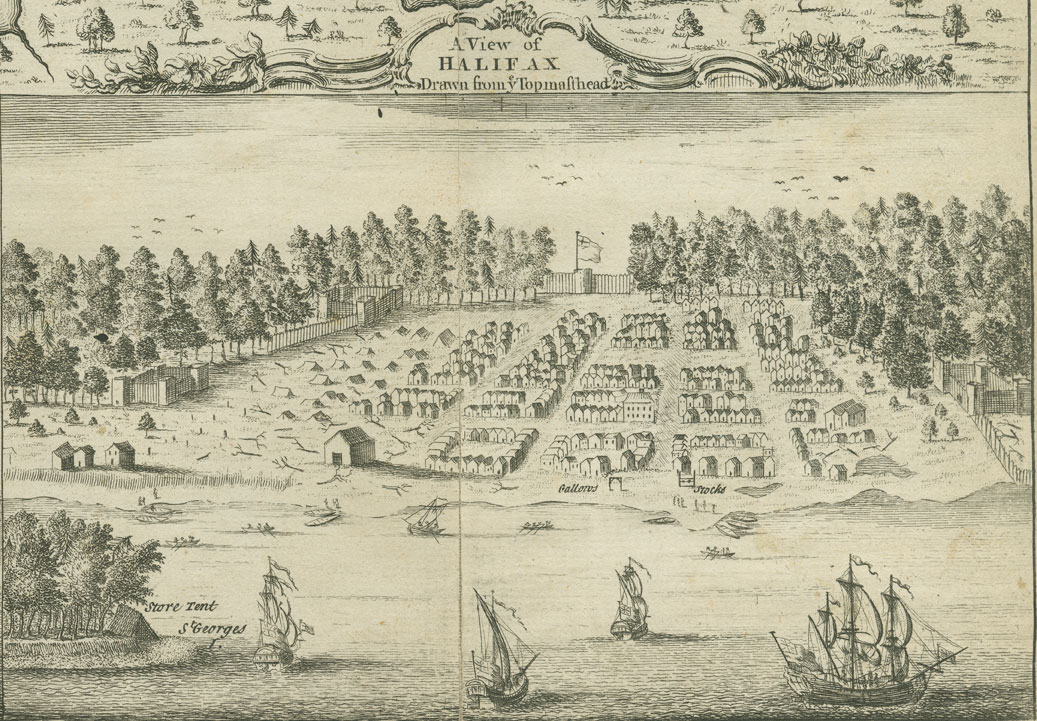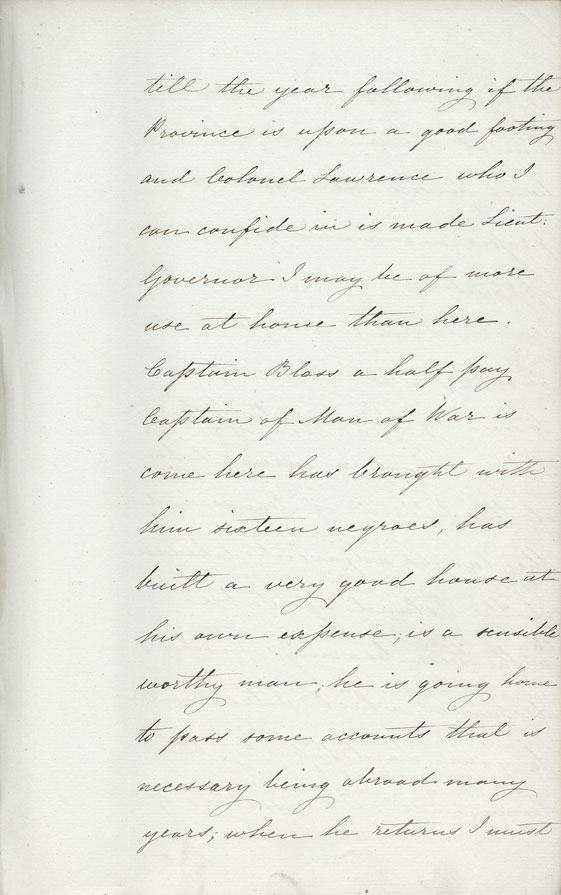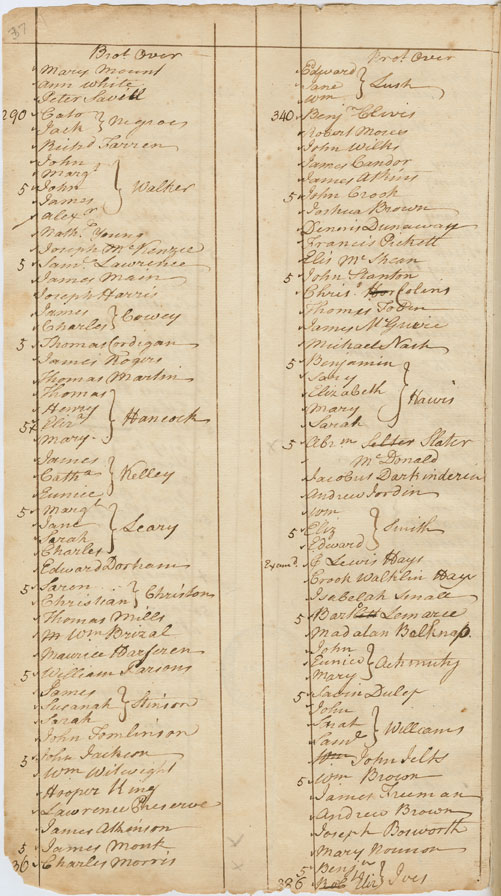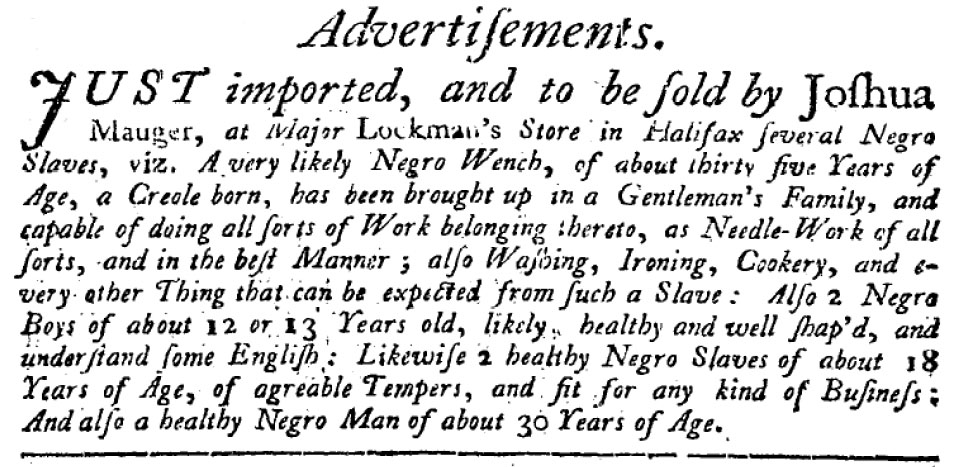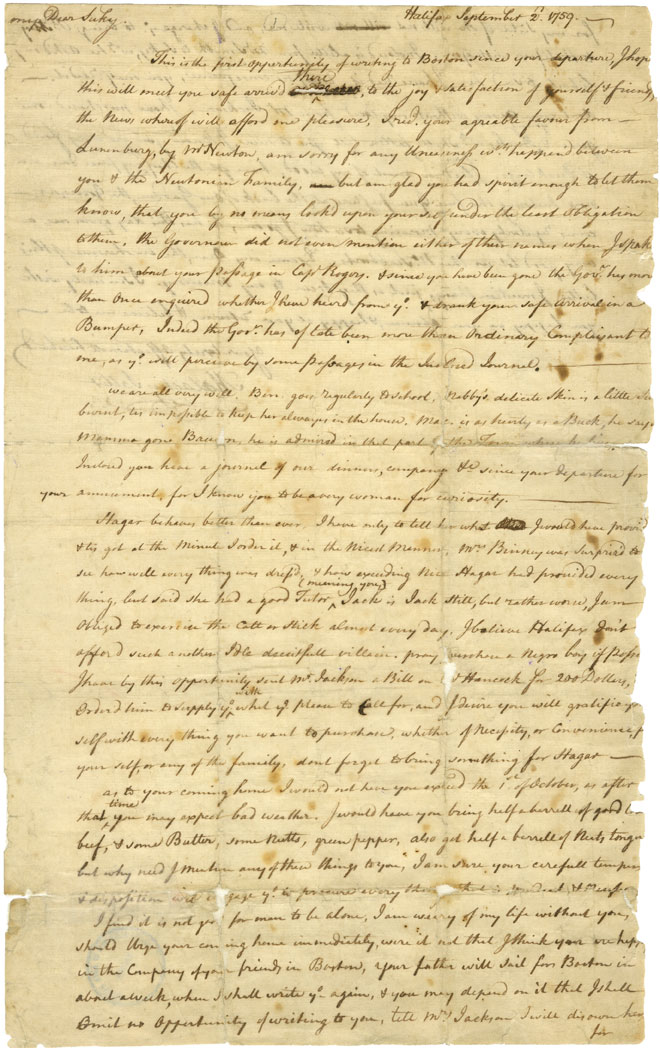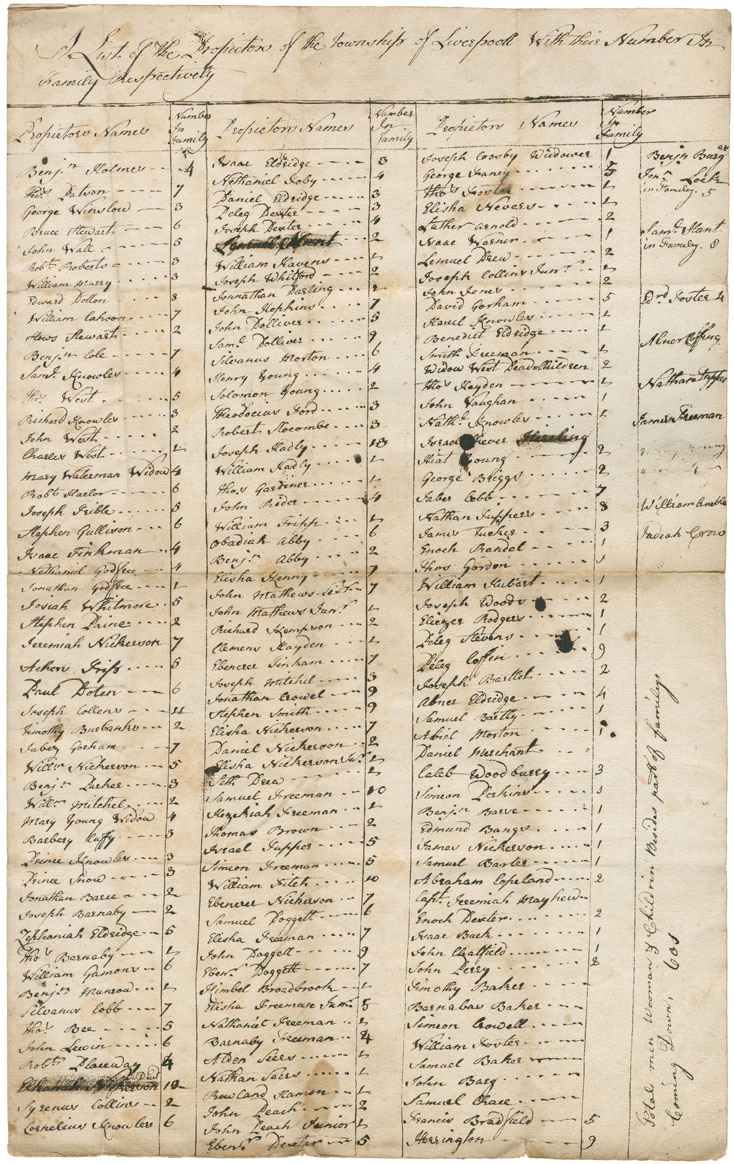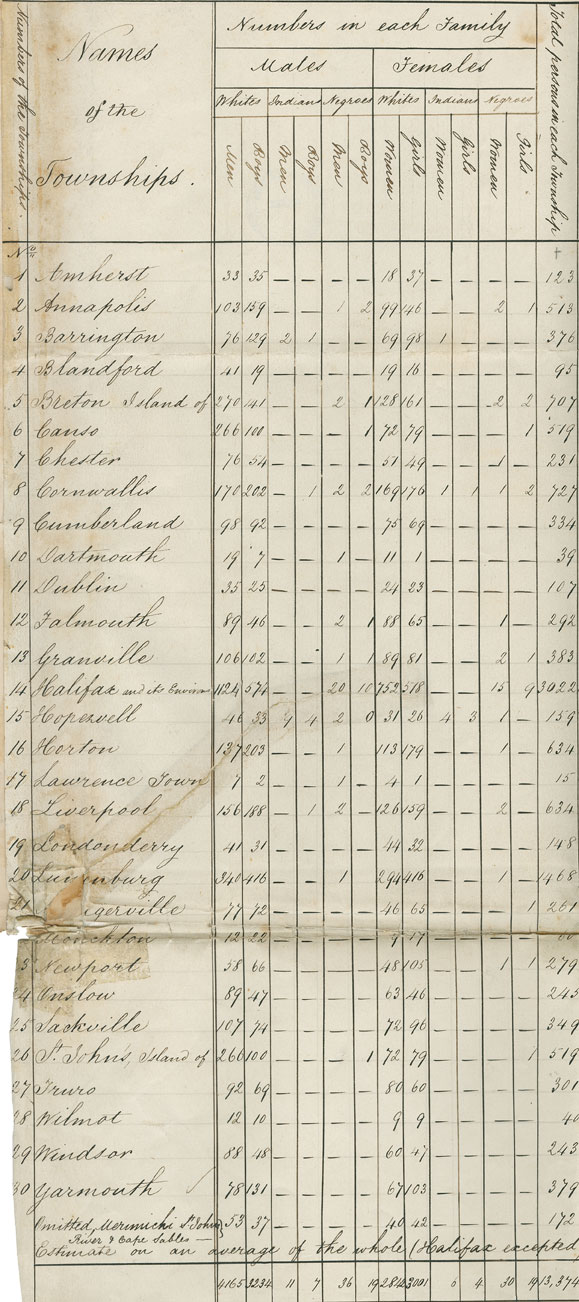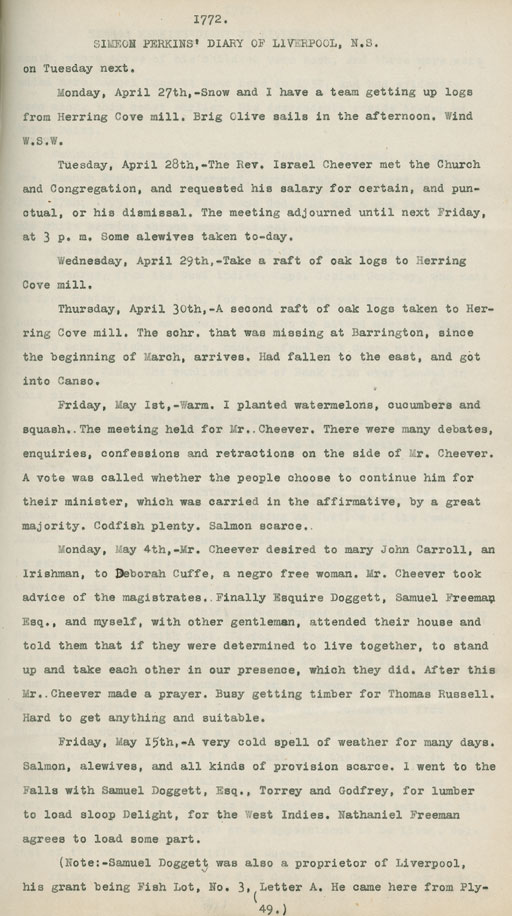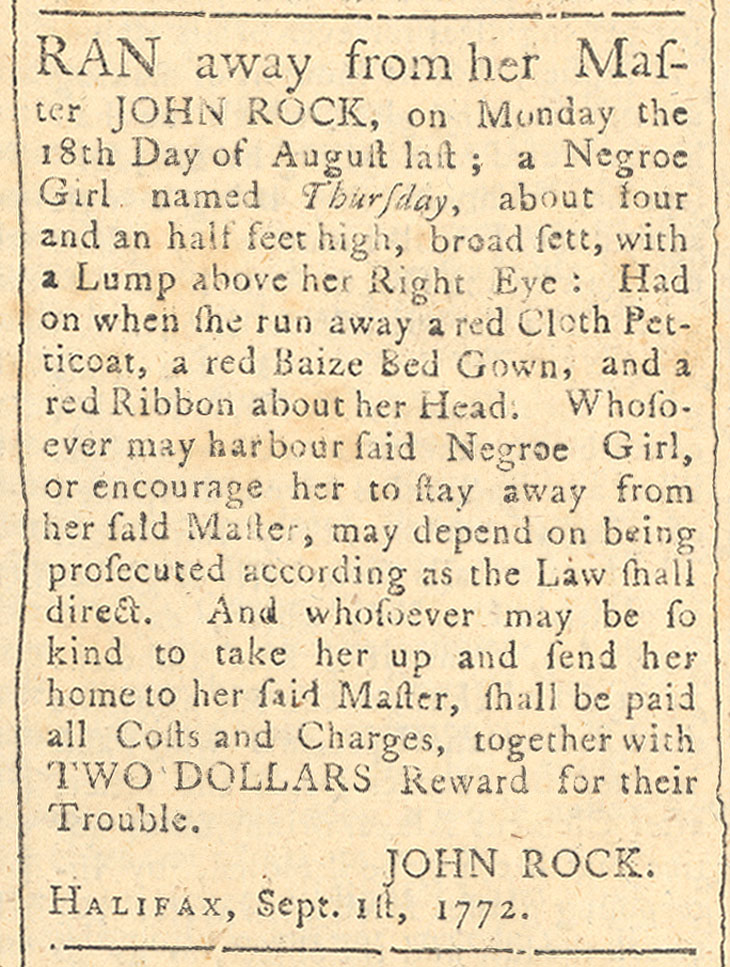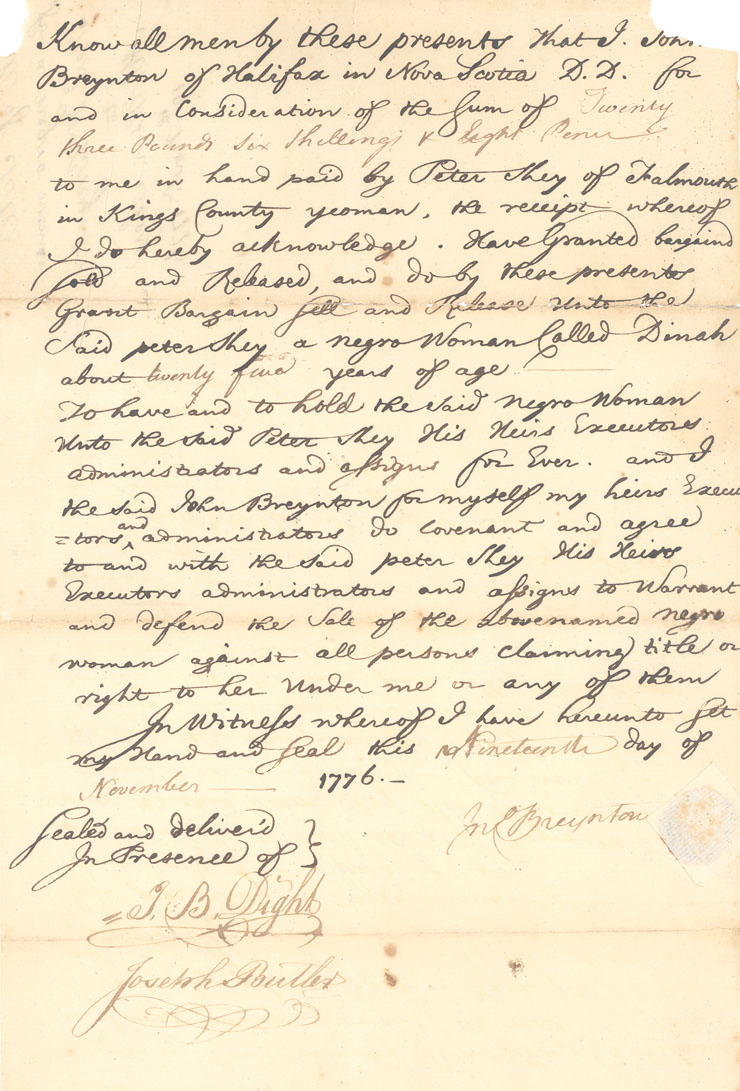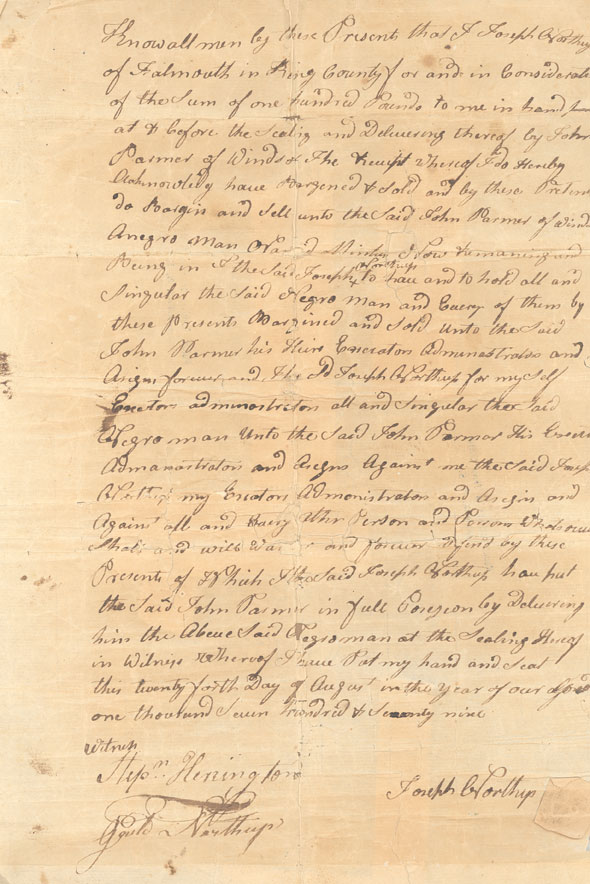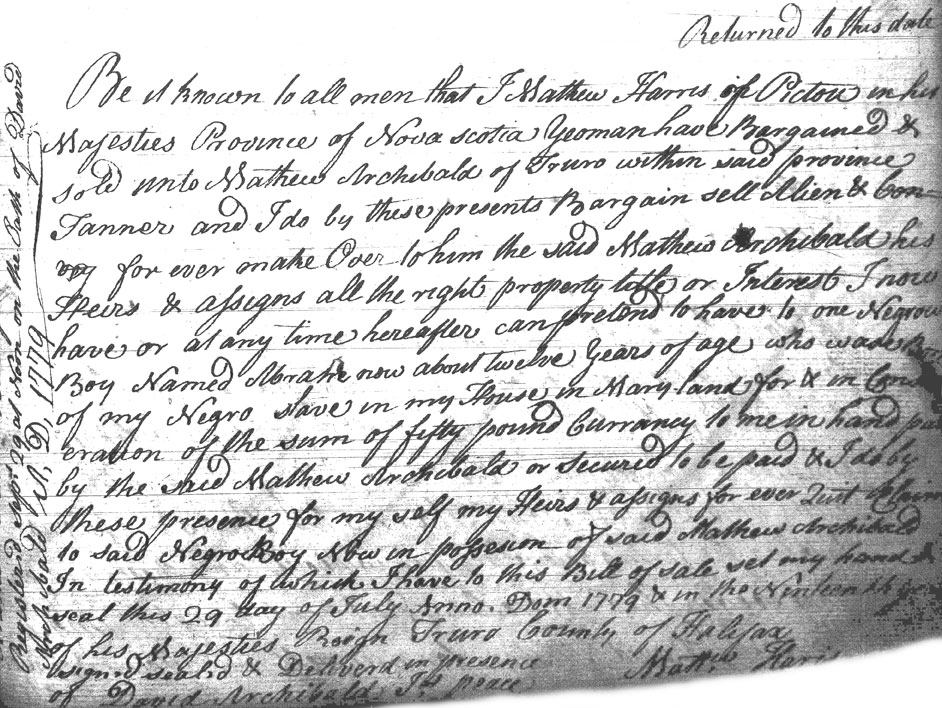Nova Scotia Archives
African Nova Scotians in the Age of Slavery and Abolition
Slavery and Freedom, 1749-1782
Most black people brought to Nova Scotia between 1749 and 1782 were slaves of English or American settlers. In 1750 a Royal Navy officer, Thomas Bloss, brought 16 slaves to Halifax, perhaps in order to crew vessels involved in maritime commerce. Prominent shipowner and trader Joshua Mauger sold slaves at auction in Halifax, and newspaper advertisements for the return of runaway slaves were common. Included in the nearly 3000 inhabitants of Halifax in 1750 were about 400 enslaved and 17 free black people.
In 1759 the governor of Nova Scotia, Charles Lawrence, offered New Englanders large tracts of free land if they would move to Nova Scotia. This resulted in some 6000 settlers (Planters) relocating to Nova Scotia between 1759 and 1765. They settled in the Annapolis Valley and elsewhere and formed townships such as Cornwallis, Falmouth and Liverpool. The Planters brought their slaves, numbering in the hundreds, with them. A few free black people, such as Barbary (Barbara) Cuffy of Liverpool, also came as Planters.
Despite the growth of slavery, a few African Nova Scotians were able to gain or keep their freedom. Over half of the free black people resided in Halifax and probably made a living as common labourers, or in domestic service, stevedoring or building construction. In 1767 there were 104 free black persons living in Nova Scotia, which included present-day New Brunswick and Prince Edward Island. This was less than one per cent of the total population.
During this period, enslaved African Nova Scotians worked as domestics, agricultural labourers and seafarers. However, some were skilled labourers such as carpenters, sail-makers and rope-makers. Nova Scotia's slave population at any one time during this period numbered in the hundreds. Although Nova Scotia's economic resources and climate could not sustain a plantation economy, its slave population provided a cheap source of labour. The assumption, then commonly held by Whites, that the place of Blacks was to be slaves was prevalent throughout Nova Scotia. These negative attitudes became sorely exposed following the large influx of Loyalist refugees, both white and black, at the end of the American War of Independence in 1783.
Results 1 to 15 of 18 from your search:
''A view of Halifax from the topmasthead''
Date: published 25 January 1750
Engraver and publisher: T. Jeffreys
Reference: Nova Scotia Archives T. Jeffreys, Untitled Map of Halifax (London, 1750)
Letter from Governor Cornwallis about Captain Bloss and his slaves
Date: 22 September 1750
Reference: Commissioner of Public Records Nova Scotia Archives RG 1 volume 35 number 25 (microfilm 15231)
"A list of settlers victual'd at this place [Halifax] between the eighteenth day of May & fourth day of June 1750..."
Date: 28 November 1750
Reference: Isaac Deschamps Nova Scotia Archives MG 1 volume 258 number 12 (microfilm 14912)
Sale of a woman (age 35), two boys (ages 12 and 13), two male teenagers (ages 18), and a man (age 30)
Date: 30 May 1752
Reference: Nova Scotia Archives Halifax Gazette 30 May 1752 page 2 (microfilm 8152)
Letter of Malachy Salter to his wife about a slave
Date: 2 September 1759
Reference: Nova Scotia Archives MG 100 volume 217 number 27f (microfilm 9667)
"A list of proprietors of the township of Liverpool with their number in family respectively"
Date: [ca. 1764]
Reference: Commissioner of Crown Lands Nova Scotia Archives RG 20 series C volume 43 number 1
"A general return of the several townships in the province of Nova Scotia the first day of January 1767"
Date: 16 December 1767
Reference: Commissioner of Public Records Nova Scotia Archives RG 1 volume 443 number 1 (microfilm 15479)
Deed from Barbary (Barbara) Cuffy to Robert Stevenson, Liverpool
Date: 7 March 1769
Reference: Nova Scotia Archives Queens County deed registers volume 1 page 258 (microfilm 18606)
Entry about the marriage of Deborah Cuffy and John Carroll, Liverpool from Simeon Perkins's diary, vol. 1 (typed transcript)
Date: 4 May 1772
Reference: Simeon Perkins Nova Scotia Archives MG 1 volume 749
Fugitive slave advertisement
Date: 1 September 1772
Reference: Nova Scotia Archives Nova Scotia Gazette and Weekly Chronicle 01 September 1772 page 3 (microfilm 8155)
Boy for sale
Date: 28 March 1775
Reference: Nova Scotia Archives Nova Scotia Gazette and Weekly Chronicle 28 March 1775 page 3 (microfilm 8153)
Bill of sale for slave named 'Dinah'
Date: 19 November 1776
Reference: Nova Scotia Archives MG 100 volume 113 number 51 (microfilm 15169)
Sale of slave 'Mintur' by Joseph Northup to John Palmer in Windsor
Date: 1779
Reference: Nova Scotia Archives MG 100 volume 14 number 113 (microfilm 794)
Watson alias Phillis v. Proud (judgement)
Date: 1779
Reference: Supreme Court of Nova Scotia — Halifax County judgement books Nova Scotia Archives RG 39 J Halifax County volume 6 page 103
Bill of sale for slave 'Abram', recorded at the Colchester County Registry of Deeds
Date: 29 July 1779
Reference: Nova Scotia Archives Colchester County register of deeds volume 1 page 468 (microfilm 17438)
